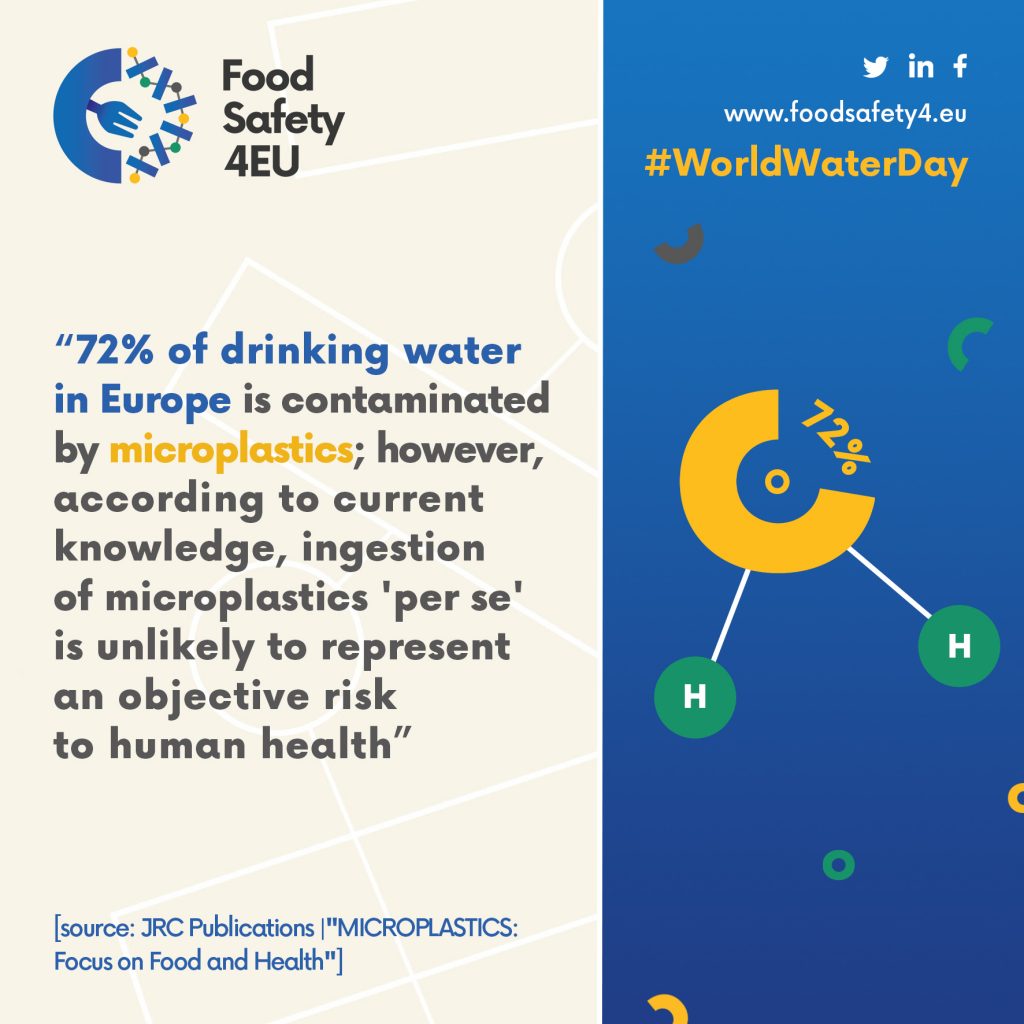
On May 6 and 7, researchers from academia and industry, and regulators gathered to establish a coordinated approach to assess the human health risks of micro- and nanoplastics in food during EFSA 25th Scientific Colloquium. Here are the highlights of the discussions.
What are micro- and nanoplastics?
Microplastics are small particles of plastic polymer materials smaller than 5 mm in size. Nanoplastics are even smaller, ranging from 1 to 100 nanometres – as little as a thousandth part of a hair’s breadth. Those particles are ubiquitous in the environment and are commonly found in food (e.g. in mussels) and drinking water.
How to detect and quantify micro- and nanoplastics?
Particles with a size bigger than 1 mm can be visually detected and quantified. However, for smaller particles an array of other analytical techniques is necessary, from traditional microscopy to more advanced techniques. Currently, existing analytical methods are only capable of detecting relatively large particles, but the bigger hurdle to completely identifying them is the often lack of capability to characterize their chemical composition.
Experts participating in the colloquium agreed that the future research should focus on few key aspects which would allow for proper identification and quantification of those particles:
- Developing unified nomenclature,
- Protocols of sample preparation and analysis.
- Issuing guidelines for conducting safety studies and
- Maintenance and standardisation of reference materials to allow comparability between future studies.
These would help in the exposure assessment and hazard characterization, and eventually enable a proper risk assessment.
Developing our understanding of human exposure to micro- and nanoplastics
We are exposed to micro- & nanoplastics almost every day: those particles are part of the air pollution, they are ingested with food and water and are in the environment. Surprisingly, although we are frequently exposed to them, there is a limited amount of reliable data about the number of particles we ingest, their exact sources and their fate in our body. Limited data shows that some particles pass through the digestive system possibly without affecting us at all, while other studies suggest that certain particles can enter the blood stream and thus the organs and tissues with little understood effects.
In a set of dedicated discussions during the colloquium, participants indicated that it is critical to generate new reliable data on exposure through the whole diet, sources (including food packaging), and identify which commodities are most likely to be contributing with the highest amounts of micro- and nanoplastics exposure.
Micro- and nanoplastics: a hazard?

In 2016, EFSA published a statement on microplastics and recommended to gain knowledge on the possible toxicity of plastics particles. Since then, there have been a few contradictory studies about the hazardous nature of those particles. In fact, participants to the workshop agreed that there is simply not enough evidence available to characterize the hazard of micro- and nanoplastics, and by extension to assess the risk to human health.
Conclusions
A clear message was shared throughout the event: there is not enough evidence to evaluate the risk for human health. To make sure risk assessment can take place, multidisciplinary coordinated actions are necessary. In addition, given the global nature of the issue, collaborations between organisations and individual researchers outside of the European ecosystem are essential. After all, plastics particles are not only a concern for their potential threat to human health but also because of the risk they pose to the environment and its biodiversity.
Siméon Bourdoux, Scientific Project Manager @ILSI Europe
Nevena Hristozova, Scientific Project Manager @ILSI Europe
Want to know more?
Check out EFSA video
Further reading:
- van Raamsdonk, L.W.D., van der Zande, M., Koelmans, A.A., Hoogenboom, R.L.A.P., Peters, R.J.B., Groot, M.J., Peijnenburg, A.A.C.M., & Weesepoel, Y.J.A. Current Insights into Monitoring, Bioaccumulation, and Potential Health Effects of Microplastics Present in the Food Chain. Foods 2020, 9, 72.
- Hale, R. C., Seeley, M. E., La Guardia, M. J., Mai, L., & Zeng, E. Y. (2020). A Global Perspective on Microplastics. Journal of Geophysical Research: Oceans, 125(1).
- Prata, J. C., da Costa, J. P., Lopes, I., Duarte, A. C., & Rocha-Santos, T. (2020). Environmental exposure to microplastics: An overview on possible human health effects. Sci Total Environ, 702, 134455.
- Zhang, Y., Kang, S., Allen, S., Allen, D., Gao, T., & Sillanpää, M. (2020). Atmospheric microplastics: A review on current status and perspectives. Earth-Science Reviews, 203.